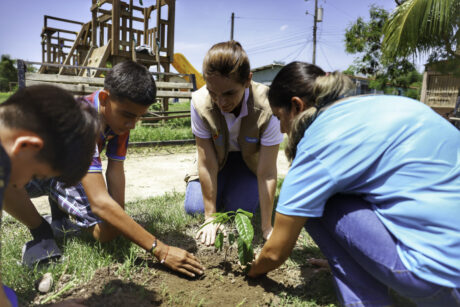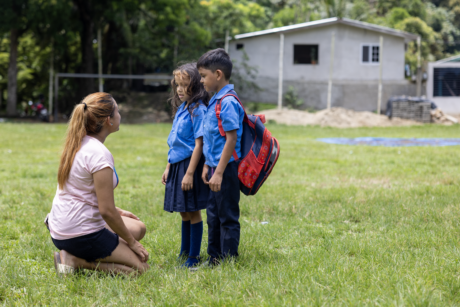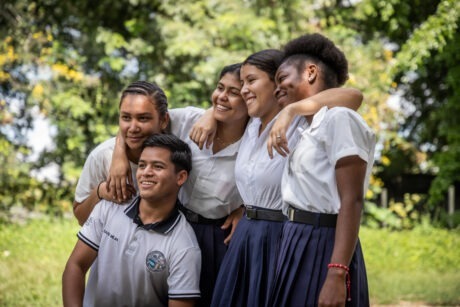A new intersectional analysis of the social identities and characteristics of at-risk Hondurans provides significant insights into factors that influence irregular migration, crime or violence. The study’s unique finding is that a person’s identity is very closely aligned with the neighborhood where they live.
“In present-day Honduras, culturel, ethnic and historical backgrounds are less related to community cohesion than by territorial factors, including where individuals live, work and where their children play after school,” according to a comprehensive study for USAID’s Sembrando Esperanza. “This finding emphasizes the importance of the neighborhood (colonias) … [avec] increased feelings of safety and a sense of belonging.”
Robyn Braverman, USAID’s Sembrando Esperanza’s Chief of Party in Honduras, says this was one of the surprises from the intersectionality analysis, a tool used to understand how various social identities—such as race, genre, classe, sexuality and others—interact to create unique experiences of discrimination and privilege that cannot be fully understood when considering each identity in isolation.
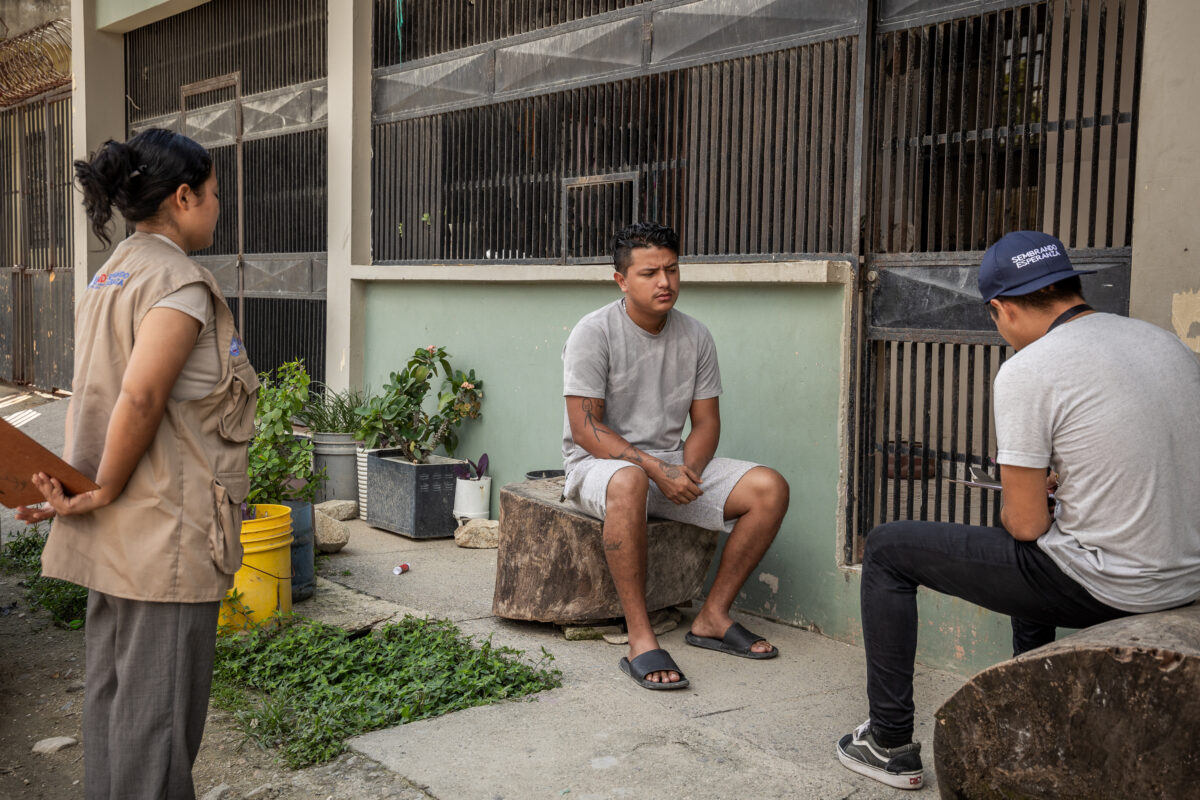
“The fact that they have this very deep identity in their neighborhood shocked us all because my perception was they have this national sense of identity and pride,» dit-elle.
Gustavo Bardales, Sembrando Esperanza’s Monitoring, Evaluation and Learning Specialist who collaborated on the study, says he and other reviewers of the study were also surprised by this finding.
“There is a strong link between the person’s neighborhood and their identity," dit-il. “It overcomes all social identities and all other factors like ethnicity or gender.”
USAID’s Sembrando Esperanza is a seven-year program that uses a human security approach that reflects the intersection among the threats, risks and vulnerabilities within individuals and communities that fuel crime and irregular migration. It categorizes at-risk populations into primary, secondary and tertiary levels and co-creates interventions to reduce these factors. The program uses a variety of tools to reduce secondary-level risk factors, y compris family counseling, youth-led initiatives and secteur privé collaboration, among others.
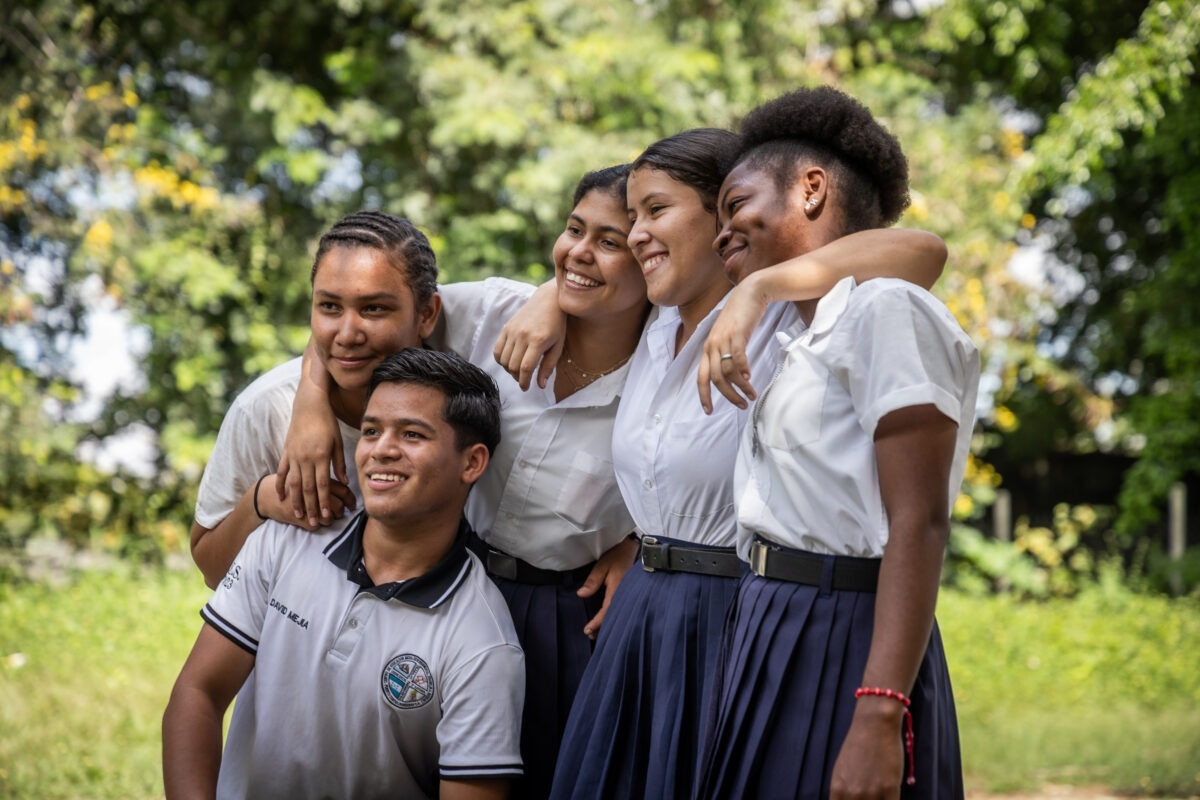
Braverman says the neighborhood connection makes them rethink their local approach. “It made us go back to some of those activities that we do to keep people at the primary level of risk by doing more neighborhood activities as opposed to bigger community-driven activities,” Braverman says. Invisible gang boundaries, lack of transportation and services make it challenging for youth to seek out opportunities beyond their neighborhood.
Data-driven programming in Honduras
The intersectional analysis, conducted by Bixal on behalf of USAID’s Sembrando Esperanza, is one of several studies undertaken by the program to support their efforts in Honduras.
“An intersectional analysis allows for a more nuanced understanding of the complex and unique factors that give rise to irregular migration, violence and crime among youth and families,” Braverman explains.
The analysis explored how these identities uniquely intersect and highlight the heightened marginalization experienced by youth, women and transgender persons.
“This analysis is based on not just data and statistical models but also in-depth interpretation and the implications of social and identity adapted for specific contexts, Par exemple, violence et migration,” Sembrando Esperanza’s Bardales says. “This was really innovative, and Sembrando Esperanza and Bixal learned a lot.”
The USAID-funded program is working with service providers to ensure they are meeting the needs of the populations identified in the study and providing hands-on training to be more inclusive in counseling and trauma-informed care.
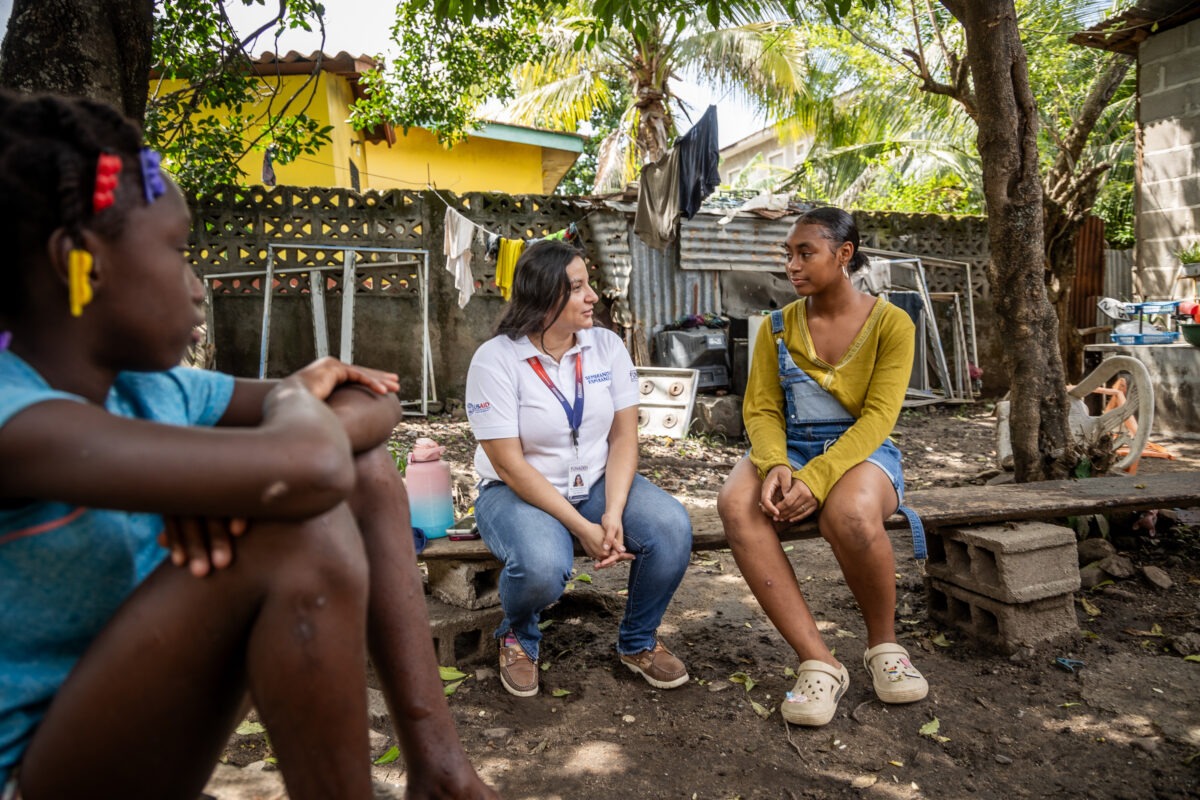
This intersectional analysis identified basic forms of identity with a high risk of social marginalization, of which five composite intersectionality profiles were established: Males aged 11 à 18 who have dropped out of school; Internally displaced young, single mothers; Social activists (including LGBTQI+) and Indigenous, environmental and democracy activists; Internally displaced single, childless men ages 20 à 29; And young, childless women who have dropped out of school and are in low-paid work or are unemployed.
The study’s analysis was based on key informant interviews, focus group discussions and secondary data, including existing reports (such as academic studies, government reports, media reports and quantitative databases) and Sembrando Esperanza reports and background documents. Data collection occurred in October 2023 and spanned the municipalities of Comayagua, Puerto Cortés and Francisco Morazán (Distrito Central).
Applying the data to implementation
USAID is sharing the study’s findings with other implementers in Honduras. “The intersectional analysis encourages service providers and professionals to delve into how people perceive their world,” Braverman says.
USAID is sharing the study’s results with partners and other implementers to help them with their programming goals. Sembrando Esperanza and its partners are already using the findings in their activities in 10 municipalités. The program team is sharing the document with members of the Sembrando Esperanza consortium, their respective agents of change, USAID and other implementers.
“I don’t think it’s just a piece of work that gathers dust on a shelf,” Braverman says. “Rather, we try to use all of our pieces of evidence to build that collaborative learning experience by sharing it with key actors. The most important people are the communities and the families because we also want this information to impact them.”
Bixal’s report highlights that well-intentioned efforts to improve the lives of Hondurans may be limited by funding, training and institutional barriers.
“Funding for nongovernmental organizations is inadequate or inaccessible, often limiting their ability to address community concerns and creating resource deserts,” Bixal wrote in its report. “The lack of coordination among NGOs and international organizations often leads to redundancy or incomplete projects. Neighborhood organizations (patronatos) and security roundtables have the potential to strengthen community resilience, but access to resources and funding often obstructs these community-focused initiatives.”
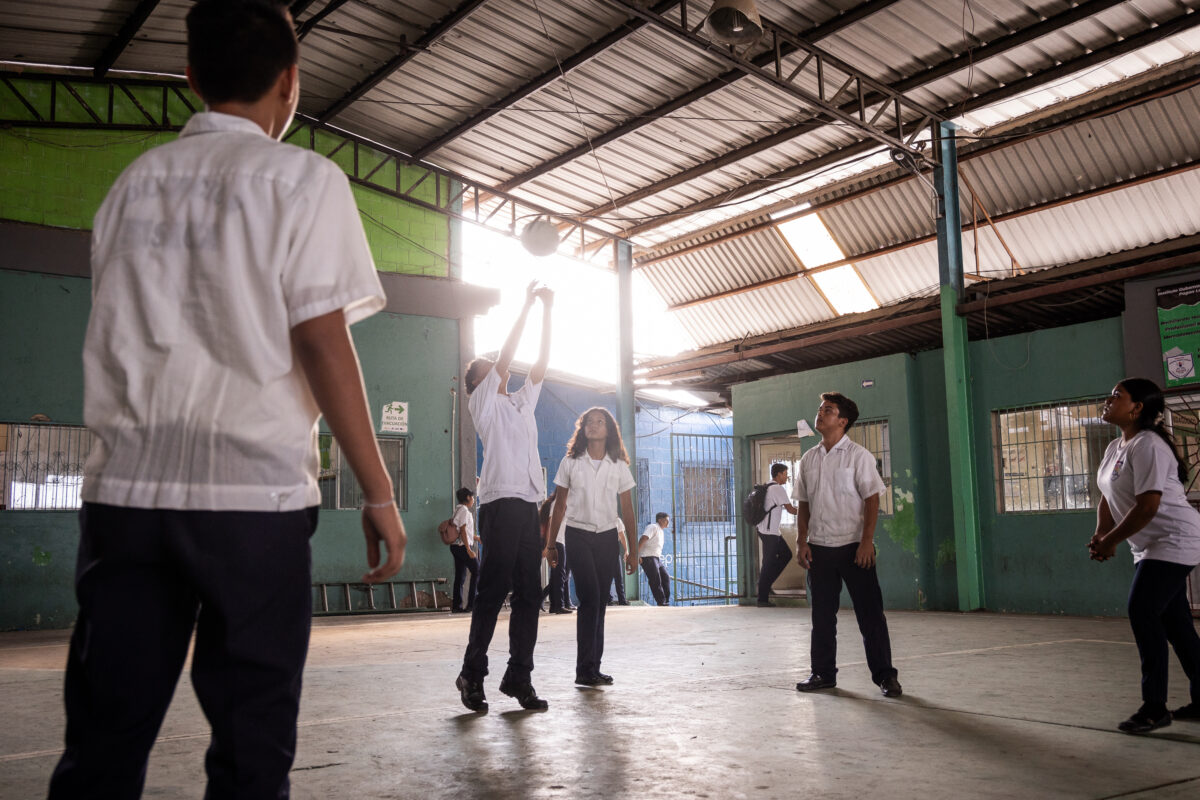
The study said that training for public service providers—particularly those in the security, health and justice sectors—is insufficient and impedes institutional effectiveness because not all providers are equipped with ongoing role-specific education or training on topics such as intersectionality or gender.
Report’s conclusions
The study made several conclusions and recommendations:
Age plays an important role in the intention to migrate, with key age windows from 20 à 29. Expanding opportunities for youth through entrepreneurship and vocational training, developing interest and access to secondary education, improving local leadership skills, and improving youth access to governmental services holds the potential to inspire young people to remain in Honduras.
There is a particularly close relationship between school dropout and heightened risks of crime involvement. The findings underscore the importance of pull factors over push factors in gang engagement.
The power of advocacy displayed by youth organizations offers critical opportunities to advance youth involvement as a protective factor against violence and irregular migration. Investing in capacity building for youth organizations (at the municipality and national levels) and creating networks with established programs is an effective use of existing infrastructure to further the goals of SE programming.
Honduras lacks a centralized and standardized data system, resulting in poor quality data and ineffective or uninformed policymaking decisions. The available data often lacks disaggregates, further impeding efforts to address complex challenges like gender-based violence.
The lack of effective collaboration across sectors, établissements, and organizations poses a challenge. Community-based organizations, civic society organizations and advocates often work effectively in their own spheres but lack a centralized point of contact to pool resources or collaborate.
The lack of comprehensive and ongoing training programs for government institution officials hinders service delivery and weakens institutional effectiveness. Prioritizing ongoing and relevant professional development programs within a systematized training structure is essential for enhancing the quality and responsiveness of public service providers.
The effectiveness of Honduran decentralization encourages focusing on capacity building at this scale. These proven capacities would be an excellent foundation for implementing functional and targeted intervention strategies to restore community trust in the government.
